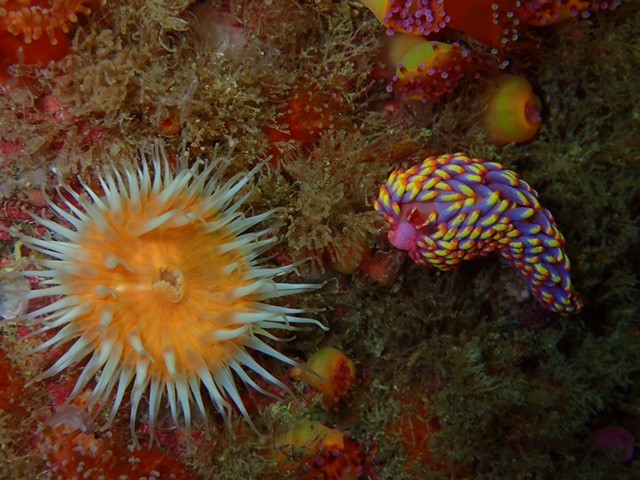A member of the Totnes Sub-Aquatic club has made a startling discovery while on a dive.
This incredible picture of a multi-coloured sea slug, Babakina anadoni, was captured by club member and Seasearch volunteer Allen Murray.
The creature measures just 2cm in length.
Allen spotted and photographed the tiny creature near Melledgan, an uninhabited rock island in the Isles of Scilly, during The Wildlife Trust’s National Marine Week.
As well as capturing the incredible pictures of this creature it is also believed to be the first confirmed record of the species in the UK according to Cornwall Wildlife Trust and the Isles of Scilly Wildlife Trust.

Matt Slater, Marine Conservation Officer at Cornwall Wildlife Trust and Co-ordinator of the Seasearch programme for Cornwall and the Isles of Scilly, said: “What an incredible find. We were extremely excited to hear about the sighting of this colourful nudibranch – a species that we believe has never been recorded in the UK before.
“It’s one of the prettiest sea slugs I’ve seen and, given its less than half the size of your little finger, it’s amazing Allen spotted it at all! There’s still so much out there that we don’t know about our marine environment. Records like this from our Seasearch divers are vital in helping us understand and better protect our seas.”
Lucy McRobert, Communications Manager at Isles of Scilly Wildlife Trust, said: “We never cease to be amazed at the wildlife turning up in Scillonian waters. From rare and beautiful nudibranchs to violet sea snails to great whales like humpbacks and fins, every time we dive beneath the surface we learn and see something new!”
Nudibranchs, often known as sea slugs, are soft-bodied marine animals famous for their extraordinary bright colours and striking shapes.
They are much like their land-based, garden relatives and feed on seaweeds, anemones and other sea slugs.
Sea slugs can incorporate the stinging cells from their prey into their own bodies, giving them a defence against predators.





Comments
This article has no comments yet. Be the first to leave a comment.